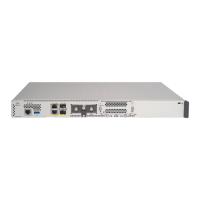Figure 15: Cabling a Transceiver Module
Removing the Transceiver Module
The transceiver module is a static-sensitive device. Always use an ESD wrist strap or similar individual
grounding device when handling transceiver modules or coming into contact with modules.
Caution
To remove a transceiver module, follow these steps:
Step 1 Disconnect the network interface cable from the transceiver connector.
Step 2 Install the dust plug immediately into the transceiver’s optical bore.
Step 3 Grasp the pull-tab and gently pull to release the transceiver from the socket.
Step 4 Slide the transceiver out of the socket.
Step 5 Place the transceiver module into an antistatic bag.
Connect Interface Ports
You can connect optical interface ports with other devices for network connectivity.
Connect a Fiber-Optic Port to the Network
40G, 100G, 2x100G, or 400G transceivers are supported on Cisco 8200 series routers.Some transceivers work
with fiber-optic cables that you attach to the transceivers and other transceivers work with pre-attached copper
cables. You must install a transceiver in the port before installing the fiber-optic cable in the transceiver.
Removing and installing a transceiver can shorten its useful life. Do not remove and insert transceivers any
more than is absolutely necessary. We recommend that you disconnect cables before installing or removing
transceivers to prevent damage to the cable or transceiver.
Caution
Hardware Installation Guide for Cisco 8200 Series Routers
34
Connect Router to the Network
Removing the Transceiver Module

